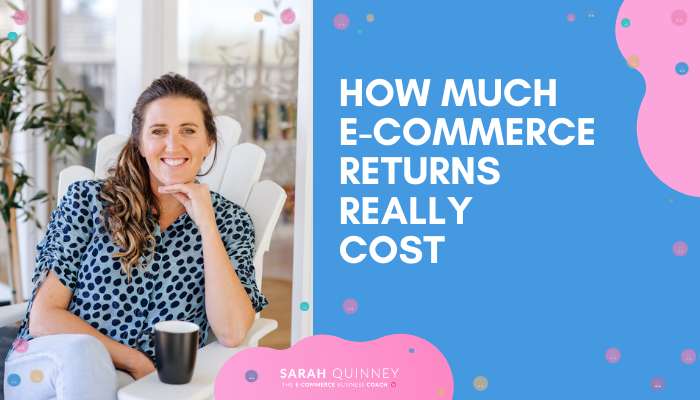
How to Start an Online Store
Online shopping has become more than just a fun perk of the progression of the internet — it has become a way of life. Over the years consumers have begun to rely on the ease it provides, whether that means shopping for leisure from the couch or for using it to order essentials. Nearly anything can be found online today including everything from electronics and books to household items and food products.
This means opportunity for consumers, but even more so for online sellers. Online commerce has opened up its own realm of possibilities in the entrepreneurial sector, as anyone can choose to open a store in hardly any time at all. And for sellers who do it successfully, they’re in for a beneficial business venture. Online sales are said to lead to a whopping $7,391 billion by 2025.
With that information, you may be interested in opening up your own online store. The process may feel like a long road ahead, but with these few steps, you will realize that it is achievable. The E-Commerce business space is always growing, but there will always be room to jump in and find your niche.
Starting Your Store
The product selling game comes with incredible opportunities. 50 years ago, telling someone you were opening a store without a physical location would get you laughed at. Today, the number of online stores in the United States is around 2.5 million! Compare that to the number of brick and mortar stores, which totaled just over 328,000 as recently as 2020. That goes to show how much opportunity their is behind a computer.
Once you’ve made the decision to go forward with your store, grab a pen and piece of paper and be ready to start brainstorming these next steps. Figuring them out beforehand will be helpful as you get further into the process.
Determine Your Business Model
A business model is a general layout of the type of company you want to run. This doesn’t mean particularly what you sell, but more of who you sell to. There are 5 general categories:
- Business to Business: A business that sells a product or service to another business.
- Business to Consumer: A business that sells a product or service to the consumer.
- Consumer to Consumer: A consumer that sells a product or service to another consumer.
- Consumer to Business: A consumer that sells a product or service to a business.
- Business/Consumer to Government: A business or consumer that sells a product or service to a governmental agency on any level.
This is the simple rundown of business models at their basic levels. If you sell clothes, you’re likely operating on a B2C (Business to Consumer) level. But if you’re a distributor selling clothes at wholesale to a boutique, you’re likely operating at a B2B (Business to Business) level. See the difference?
Though there are 5 categories as of now, remember that the digital space is always progressing, and so too will the business models. New and intuitive ways of selling will eventually emerge. If your business doesn’t fall into one of the 5 categories above, that’s okay! Continue on.
Choose Your Product
Now that you have figured out your business model, start thinking about what you want to sell. Before choosing, it is important to exhaust every route of product research. Look at the past trends, current niches, and future market predictions. Evaluate your space of interest and try to identify gaps. What is the market missing? How can you fulfill that gap?
These are questions that will help you not only serve your market, but serve it effectively.
Choose Your Store Type
Within online selling, there are different types of products, like physical, digital, or service-based. We’ll look at physical and digital, as these refer more to E-Commerce vs. service providing.
Digital
Within the digital product realm, options include drop shipping, print on demand, and downloadables. With this type of product, you are not responsible for mailing a physical product to your buyer.
- Dropshipping: A consumer buys a product from your store, then you order the product from the wholesaler/seller and they send it directly to the buyer.
- Print On Demand: Companies like Teespring will allow you to set up a storefront within their platform. When a customer orders a product, Teespring prints it, makes it, and then handles sending it to the buyer.
- Downloadables: Downloadable products are used frequently within creative industries with items such as social media templates, e-books, and other items that are used only on a computer. When purchased, the files are sent directly to the buyer’s email address. There is no physical product or shipping process involved.
Physical
The physical product space involves the movement of physical goods. Where digital options mean you don’t have to ever “touch” the product, physical options require the opposite.
- Wholesale: Wholesale involves buying products from a wholesaler. These products are typically purchased in bulk at a discounted rate, and then sold to buyers using a standard 2.2-2.3% markup. This is the most common form of physical selling and is what you see with clothing stores and more retail shops.
- Warehouse: A warehouse model involves keeping stock on hand and distributing to retailers. You are likely working directly with manufacturers to do so.
- White Labeling: Whitelabeling (or private labeling) involves putting your brand name or logo on a product made by another company which you then sell.
As an E-Commerce seller, any of the above options can prove lucrative. It all comes down to what most effectively fits your business.
File Taxes and Licensing
Starting a business requires governmental compliance. Whether that is through setting up your taxes, determining what type of company you have (LLC for example), or even getting the proper licenses to sell a product, the last thing you want to do is make a mistake on the legal side of things.
You can visit the Australian Government website to learn about setting up an online store in Australia.
For those of you in the United States that would like specific information on your state requirements, you can visit How to Start An LLC and select your state.
Setting Up Branding and Marketing
On the branding side of things, a business needs a great look, feel, and voice in order to be memorable and recognized. Without branding, your business can drive customers to competitors. You don’t need anything crazy to start out, but a name, logo, and visuals that support your brand and mission are imperative to the success of your company for the long run.
Once your store is set up, a large portion of your revenue potential comes down to marketing. To do this effectively, your target audience needs to be clear. Using Ad Managers like Facebook and Google, you can pinpoint and reach the exact customer you’re looking for and flow massive amounts of revenue into your business.
All in all, starting an online store in the E-Business space can feel overwhelming, but it is definitely possible to do so successfully when the right steps are taken. Take each step one at a time and continue to push until your business is where you want it. Good luck!
—

Ready to scale your online store? There are two ways to work with Sarah…
The E-Commerce Women In Business Mastermind – your exclusive e-commerce coaching and e-commerce digital marketing mentorship for women looking to Grow and Scale your online store. Click here to learn more
Yours in success,
Sarah x
